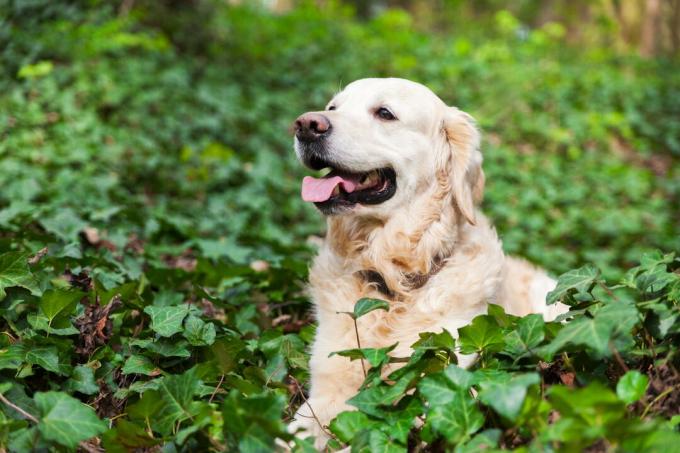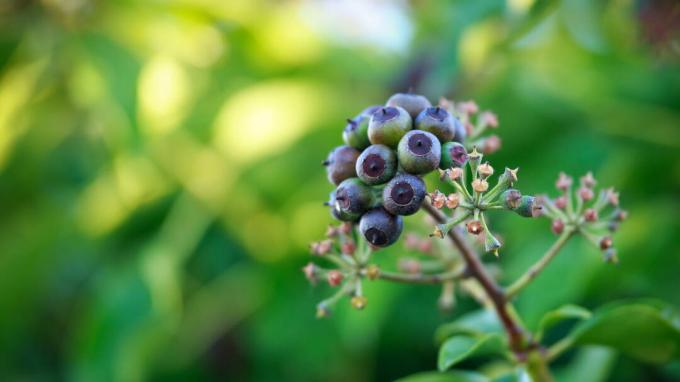The rumor of poisonous ivy persists. We research and clarify whether ivy is poisonous for children, cats, dogs and the like.

ivy (Hedera helix) is poisonous, every child knows that, right? The beautiful plant in lush dark green is actually not entirely harmless. The black and blue berries in autumn and winter are particularly seductive. But what happens when a careless child or puppy cannot resist temptation?
contents
-
Poison ivy?
- Is ivy poisonous to humans?
- Is ivy poisonous for cats, dogs and the like?
- Treat ivy poisoning
Poison ivy?
Often ivy is classified as more dangerous than it actually is. Officially, it is considered to be poisonous to slightly poisonous, because all parts of the plant contain harmful substances. These substances serve the plant as protection against predators. The advantage is that these substances are not only toxic, but also extremely bitter. People or animals who are tempted to try the plant will quickly notice that it absolutely does not taste good. Basically, humans and animals protect themselves.
Is ivy poisonous to humans?
All parts of ivy are poisonous to humans. This is mainly due to the two ingredients α-hederin and falcarinol. The first substance is also used in medicine in small quantities. Perhaps you remember the ivy leaf on the packaging of the sweet cough syrup that you got when you were a child? Alpha-hedrin is often used to treat colds and bronchitis. Falcarinol, on the other hand, is one of the alcohols and has a fungicidal effect. It protects the roots of the ivy from fungal diseases. However, this substance is also toxic to humans. When pruning the plant, some therefore react sensitively. If you touch the ivy lightly, however, contrary to what is sometimes claimed, you don't get a rash straight away. Rather, this rumor is based on a mix-up. The very toxic poison sumac (Toxicodendron pubescens) from North America has the second name poison ivy, although it is not related to ivy.

The part of the ivy that is probably most predestined for consumption is the blue-black berries. Those who are not deterred by the bitterness can suffer serious consequences. Symptoms of poisoning can occur if only two berries are eaten. Possible symptoms are:
- headache
- High temperature
- Burning sensation in the throat
- Diarrhea and vomiting
- Accelerated pulse
- cramps
In acute cases, shock and respiratory arrest can even result. However, it is extremely unlikely that this will happen. Ivy is inedible and very bitter. Hardly anyone will consume larger amounts. So far, only very few cases are known in Germany in which the symptoms have been moderately severe. So while ivy is poisonous, you don't have to get it out of your garden right away. It is unlikely that children will consume large amounts of it. The best thing to do is to show your child the plant and explain that it is poisonous and that consuming it will have very unpleasant consequences. Children should not be kept away from all poisonous plants, but rather learn how to deal with them as early as possible. If you do not get to know the plant in your own garden and take care of it, this may happen somewhere along the way unnoticed.
Is ivy poisonous for cats, dogs and the like?
Ivy is also generally poisonous for pets. This applies to cats and dogs as well as rodents and horses. But the animals are by no means fond of ivy. Often they notice immediately that the plant does not suit them because it tastes very bitter. If larger amounts have been consumed, the symptoms are similar to those in humans: diarrhea and vomiting, an increase in the pulse rate and cramps up to and including respiratory arrest can result. But ivy is not harmful to all animals. blackbird, Choke and star can eat the berries of the ivy unmolested. They even serve them as a valuable source of food over the winter, when it is otherwise often difficult to find something else. So ivy is by no means a purely poisonous plant, but at the same time also a productive fodder plant.
Treat ivy poisoning
If parts of the ivy have been eaten, act quickly. The following steps are important in ivy poisoning.

Procedure for ivy poisoning:
- Remove parts of the plant from the mouth
- Rinse your mouth out with still water
- Inform the poison control center and consult a doctor immediately
A directory of the Poison control centers in Germany, Austria and Switzerland You will find here.
If you still want to part with your ivy, we have put together the most important things for you about how to do it Properly remove ivy.



